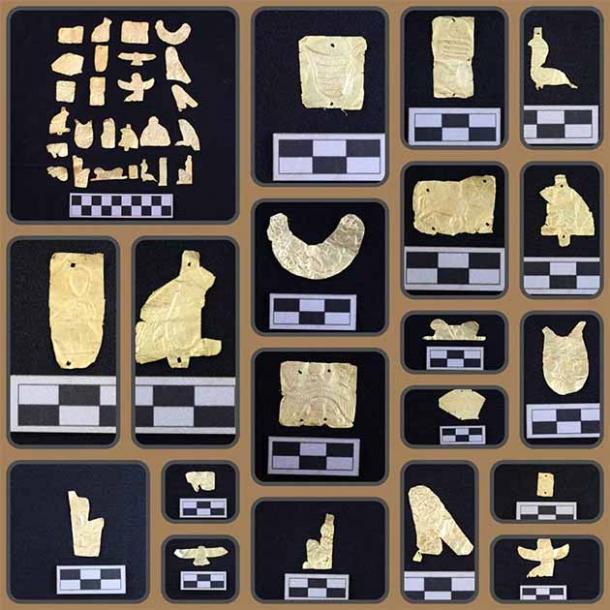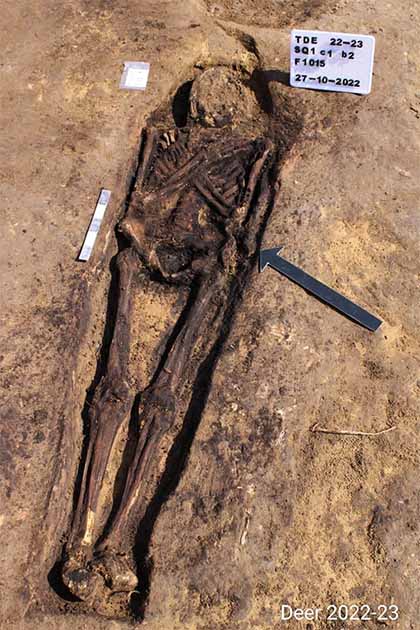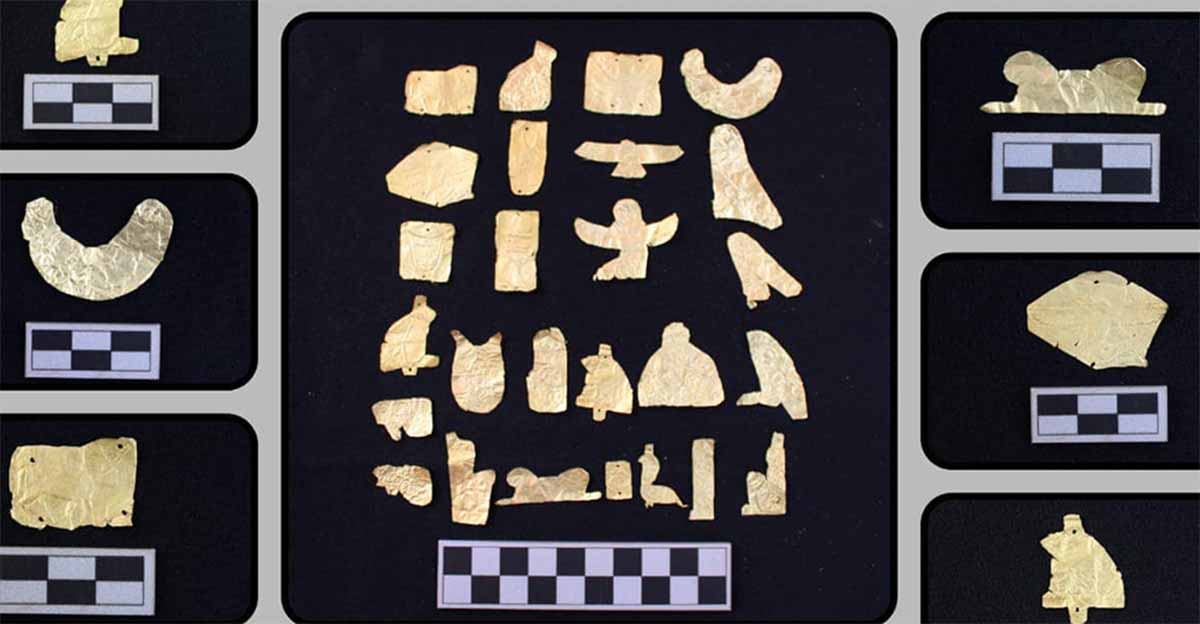Tremendous Discovery of 20 ‘New’ Tombs at Tell El Deir in Egypt
Egyptian archaeologists excavating the Tell El Deir site in the Nile Delta have discovered 20 tombs dating back to between 664 BC and 332 BC. They include both limestone structures, likely for the burial of the rich, and simple ditches where the less well-off were interred.
According to MENA (Middle East News Agency), a statement by the Supreme Council of Antiquities has termed it a tremendous discovery for the city of Damietta, where Tell El Deir is located. The find of these startling tombs has the potential to “rewrite its history.”
Mostafa Waziri, the Secretary General of the Council, is reported by Al-Ahram to have stated that some of the tombs can be dated to the Saite Period of the 26th Dynasty. The 26th Dynasty was the last indigenous ruling family of Egypt before its Persian conquest in 525 BC.

An archaeological mission in Egypt has uncovered 20 tombs at Tell El Deir. (Ministry of Tourism and Monuments)
The Contents of the Tell El Deir Tombs
Apart from the burials themselves, the team has also unearthed plenty of remarkable artifacts during the excavations. Most extraordinary is the discovery of several gilded chips that were meant as decoration for the Tell El Deir tombs. These were designed in the shape of various ancient Egyptian deities, most notably Isis, Heqet and Bastet. One of the chips represented the god Horus in the form of a winged falcon.
- Isis, An Egyptian Goddess Who Spread Her Wings Across Europe
- The Cult of Horus: Myths That Stretch from Egypt to Rome
Isis was a major deity in ancient Egypt, the great mother goddess associated with magic and healing. Her ancient Egyptian name was Aset and Isis was the Greek name for her. Heqet was the goddess of fertility and was often represented as a frog. Bastet was one of the most popular goddesses of Egypt. She was depicted as a woman with a cat’s head or simply a cat. She was worshipped as the protector of home and hearth.
Meanwhile, Horus was the son of Isis and the god of kingship and the sky. He was depicted as a falcon whose right eye was the sun or morning star representing power and the right eye was the moon or evening star representing healing.

Archaeologists also found gold tiles symbolizing various ancient Egyptian deities. (Ministry of Tourism and Monuments)
Remarkable Artifacts Unearthed During Tell El Deir Excavations
Numerous funerary amulets of various shapes and sizes were also found. They are in the form of scarabs and other shapes and symbols related to the Egyptian deities. In addition, a headrest was unearthed as were several statues of the deities Isis, Neftis (goddess of the air and the head of the family) and Djehuti (god of the moon, learning and writing).
The excavations also unearthed several canopic jars in the form of the four sons of Horus. Canopic jars were containers to hold the innards of mummified individuals in ancient Egypt and each of the four sons of Horus protected a particular organ: Hapy (lungs), Imsety (liver), Duamutef (stomach) and Qebehsenuef (intestines). Since the heart was believed to personify the soul, it was left inside the body.

One of 20 tombs Egyptian archaeologists found at Tell El Deir. (Ministry of Tourism and Monuments)
The Necropolis of Tell El Deir (Hill of the Monastery)
Tell El Deir is an archaeological site in the northern Egyptian city of Damietta, a port city and capital of the Damietta Governate. Operational through much of the history of ancient Egypt, Tell El Deir was a huge necropolis. It saw maximum use in the 26th Dynasty period. Tell El Deir is especially known for its fine limestone sarcophagi depicting human faces, probably of their deceased occupants. These sarcophagi are now housed in the Egyptian Museum in Cairo.
- Impressive Collection of Statuettes Depicting Ancient Gods Discovered in Egypt
- Major Discoveries of Coffins, Burial Shafts and Texts Made in Saqqara
The Tell El Deir necropolis has provided valuable insights on the funerary customs of the Greco-Roman period in Egypt. Burial rites are a profound source of information about ancient cultures. The tombs and pyramids of Egypt have been particularly enriching in this regard.
The recent discovery of 20 graves at Tell El Deir is very significant. Including both rich and poor burials, it has the potential of considerably adding to knowledge of the period and the region. “It is a very important scientific and archaeological discovery as it will rewrite the history of Damietta,” explained Waziri. The Supreme Council of Antiquities of Egypt has stated its intent of continuing excavations at the site where it expects to find plenty more relics and artifacts buried beneath the sand.
Top image: Artifacts discovered within Tell El Deir tombs in Egypt. Source: Ministry of Tourism and Monuments
By Sahir Pandey
References
El-Aref, N. 2022. “In photos: A group of Late Period tombs uncovered at Tel El-Deir in Damietta” in Ahram Online. Available at: https://english.ahram.org.eg/NewsContent/9/40/482905/Antiquities/Ancient-Egypt/In-photos--A-group-of-Late-Period-tombs-uncovered-.aspx
Tabikha, K. 2022. “Egypt discovers tombs, tiles and amulets at Nile Delta site” in The National. Available at: https://www.thenationalnews.com/mena/egypt/2022/12/19/egypt-discovers-tombs-tiles-and-amulets-at-nile-delta-site/
Xinhua News Agency. 2022. “20 ancient tombs discovered in N. Egypt” in XinhuaNet. Available at: https://english.news.cn/20221220/60faf38bbc9a42d6854e4605a1809960/c.html



















